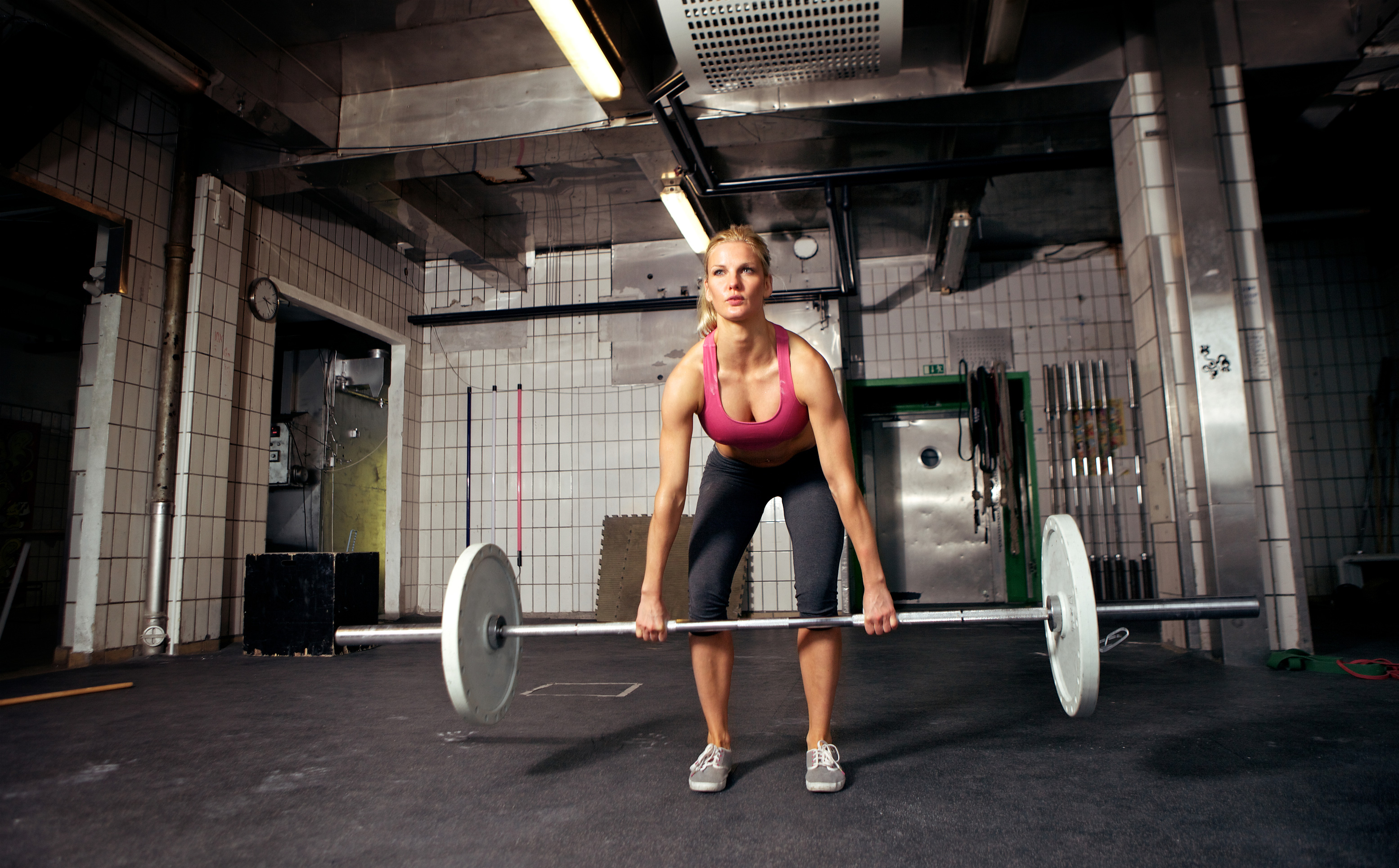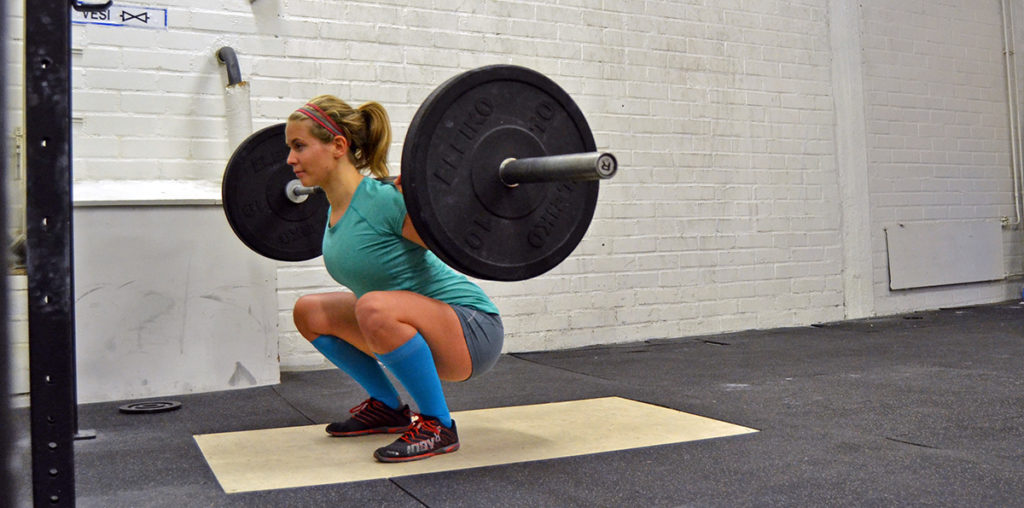CrossFit Injuries: Back Pain & Sciatica

Back Pain and CrossFit
When we see CrossFit athletes come in to our chiropractic clinic with low back pain it is often following a deadlift, squat or wall ball workout. It often starts with a slight pain on one rep. Then with every rep or WOD the pain gets stronger, and your lifts get weaker, until the day you start wondering how you are going to get out of the car once you get back home. You start feeling like you are one bad movement away from everything in your low back exploding. The problem is often a combination of long hours spent sitting at a computer at work, punishing physical effort during your workout, with not enough warm up or cool down leading to poor core stability, tight and stiff hip flexors, and strained back muscles.
CrossFit does a fantastic job of working global movement muscles and strengtheing mental fortitude, but if your technique isn’t on-point, it can often come up short of engaging deep stabilizing muscles of the core and training neuromuscular control of the low back. If you are not combining CrossFit with drills for core and back stability, it can lead to chronic bad posture, muscle imbalances, stiffness, and the perfect recipe for low back pain following Karen, Diane or Grace. Building a stronger body through CrossFit training is beneficial, but only when it’s done in the right way: with proper technique, a smart attitude and drills for balance, core strength and stability.
Let’s have a look at the common causes for why your lower back still hurts:
-
Tight hip flexors
Sitting in the office for hours, lifting heavy weights at the gym right after, then returning home to catch your favorite show or binge watch Netflix can get you to the point where your low back hurts on regular basis. Blame it on the psoas and iliacus, two muscles of the hip flexor. The psoas is a long, deep muscle which runs from the lumbar spine to the thigh bone, and the iliacus is a shorter, flat muscle which runs from the pelvis to the thigh.
Tighter hip flexors and limited hip extension range of motion can lead to a painful lower back. The solution, besides improving your core stability, can be stretching and foam rolling. The couch stretch with some light PNF stretching and foam rolling/lacrosse ball release work can help significantly.
-
Poor core stability
Working on your six-pack abs will not help your training if your entire core is not strong and functional. The rectus abdominis or “six-pack muscle” is one of only approximately 35 core muscles (depending on how you count). A weak core and poor stability is a leading cause of lower back pain. A strong core is essential for maintaining the stability of the spine and pelvis, especially under heavy loads during CrossFit WODs. Think of it as a way to keep your back strong and under control during the lifts. Core strength is essential and should be part of every athlete’s training plan, from weekend warrior to professionals.
If your muscles do get sore, make sure you get the proper rest and recovery time. When competing in Crossfit with high rep lifts or maxing out under time pressure, this puts extra strain on the muscles of the core and lower back, and it is important to give your body time to recover before your next maximal effort.
-
Lifting with your back
Lifting weights that are too heavy for your current conditioning can cause a break down in technique, and the heavy weight combined with bad form, can lead to low back pain. Lumbar strain is an injury to the muscles of your lower back (often the erector spinae group and multifidi). The muscles that run along your spine can be stretched too far or forced to contract too hard, which causes tiny tears in the muscle tissue. If not properly rehabed this will heal with scar tissue, further limiting your range of motion and decreasing your performance.
Symptoms differ from sudden pain, spasms, or sever pain to stiffness and soreness during a workout. In any case, seek sports chiropractic treatment for further diagnosis.
-
Sciatica
Sciatica is a symptom consisting of leg pain, which may range from feeling like a bad leg cramp to excruciating, shooting pain that makes standing or sitting nearly impossible. Sciatica can occur suddenly or develop gradually. Along with leg pain, you might also feel weakness, numbness, or a burning or tingling (“pins and needles”) sensation down your leg, possibly even in your toes.
The symptoms of sciatica can be caused by several conditions, such as piriformis syndrome, disc herniation, spinal stenosis, or spondylolisthesis. Each of these conditions involve irritation of the sciatic nerve, which runs from the low back down the back of the leg and divides into smaller nerves that travel down the calf to the bottom of the foot. The sciatic nerve can become irritated in several different locations as it leaves the spine and travels down the leg.
-
Lumbar disc herniation
One reason for sciatica can be a herniated disc. Disc herniations (often called disc bulges or disc protrusions) are a common problem which can lead to disabling pain, as I see in practice every day.
Healthy discs act as shock absorbers between the vertebrae and allow movement throughout the spine. Putting too much stress on the disc through extreme physical exertion, such heavy deadlifting or squatting without having proper technique, can put excess strain on the disc and cause injury. The pain associated with this injury is the disc irritating the nerve which leads to severe, excruciating pain, and often numbness or weaknesses. This can typically be treated very successfully with chiropractic care. However, if you begin to lose muscle function or bladder control the case is much more serious, and you should seek emergency medical treatment.
Our Integrated Approach to Treatment
The goal of treatment is to decrease pain and improve mobility, while restoring proper function so the condition does not reoccur. The techniques and treatments utilized will vary depending on the cause of your sciatica symptoms. A detailed evaluation will be performed to classify your condition and identify the best treatment approach to quickly relieve your pain. You will then be given specific exercises based on your exam findings to reduce pain and centralize symptoms (decrease the radiating pain into the leg). If your symptoms are resulting from a lumbar spine condition, treatment will focus on reducing irritation to the spinal nerve and improving joint and muscle function in the low back. If your symptoms are stemming from piriformis syndrome, treatment will focus on proper hip mobility and establishing a muscle balance between the glute muscles and the deep external hip rotator muscle group (piriformis, gemelli, obturators, and quadratus femoris muscles). Treatment may include the following techniques:
- McKenzie (MDT) therapy
- Graston Technique
- Active Release Technique (myofascial release)
- Chiropractic manipulation (adjustment)
- Exercise therapy (for strengthening core or glute muscles)
- Foam rolling stretches and exercises
This article is part of a series looking at common CrossFit and lifting injuries, how to prevent them, and how to treat them if they do occur. We cover the following injuries:
- Low Back Pain/Sciatica
- Knee Pain
- Shoulder Pain (Impingement)
- Elbow Pain (Tendinitis)
- Neck Pain
 262-373-9168
262-373-9168





